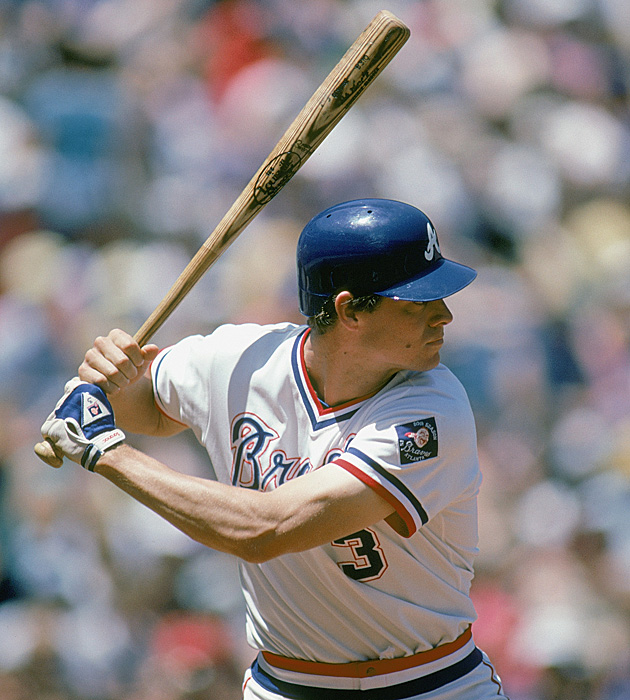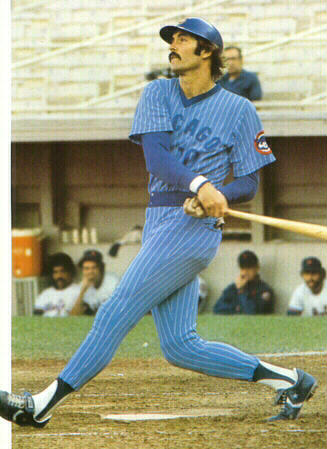127 MLB players were born in the State of Oregon. While that only makes up 0.7% of all MLB players, we can still construct a very solid 25 man roster from the players native to the Beaver state. Without further ado, let's take a look at the squad:
We will start with the hitters, with a blog to follow with the pitching staff.
1. Jacoby Ellsbury - Centerfield (2007-Active)
Ellsbury was born in Madras, Oregon and went to local Madras High School before playing his College ball at Oregon State University. He slots in perfectly as the leadoff hitter for the Oregon squad, thanks to his 299 career steals and stellar .344 on base percentage. At age 31, there may still be plenty left in the tank for Jacoby, who signed a massive seven year contract with the Yankees before the 2014 season. However, injuries have certainly taken their toll, and it remains to be seen if he can ever repeat his amazing 2011 season, where he hit 32 home runs, drove in 105 runs, stole 39 bases and hit .321/.376/.552.
2. Johnny Pesky - Shortstop (1942-1954)
Pesky is one of the most iconic Red Sox players of all-time, but he was actually born in Portland, Oregon and played high school ball at Lincoln High School. He was signed as a free agent in 1940 and made his MLB debut in 1942, promptly leading the league in hits with 205, complimented by a .331 batting average. Pesky then went overseas and served in the US Military for three seasons, before returning in 1946 and leading the league in hits AGAIN, this time with 208 and a .335 average. As if that wasn't enough, Pesky led the league in hits for a third (non) consecutive season, with 207 in 1947 to go along with a .324 average. Pesky finished his career with 1455 career hits, but a blistering slash line of .307/.394/.386. He didn't hit home runs or steal a lot of bases, but he played a good shortstop and his .394 on base percentage will make him a great table setter for the big home run hitters in the middle of the line-up.
3. Dale Murphy - Right Field (1976-1993)
Dale Murphy was born in Portland and went to local Wilson High School, before playing his college ball at BYU. Murphy was primarily a centerfielder, but with Ellsbury on the roster he will shift to right field, where he played 749 games in his career. Murphy was one of the most dominant outfielders of his generation, particularly during a six year stretch with Atlanta between 1982-1987, where he averaged 36 home runs, 105 RBI's, 18 steals, slashed .289/.382/.531 and made the all-star game every year, won back to back MVP awards, 5 gold glove awards, and four silver sluggers. The rest of Murphy's career was extremely good as well, and he finished with 398 home runs, 161 steals, a .346 on base percentage and 2111 hits. Murphy was on the HOF ballot for 15 years, never reaching above 24 percent of the vote. He will soon be eligible for the Veteran's Committee, and if he is selected will become the first Oregon born baseball player inducted into the Hall of Fame.
4. Dave Kingman - Designated Hitter (1971-1986)
Kingman is the most prolific home run hitter of this group, having mashed 442 bombs during his career. Born in Pendleton, Kingman moved early on and ended up playing his high school ball in Mount Prospect, Illinois. Nevertheless, as an Oregon born boy, he occupies the clean-up spot in the batting order, and serves as the designated hitter thanks to his absolutely atrocious glove work during his career. In fact, outside of mashing home runs, Kingman was not a very good ball player. His .236 batting average and .302 on base percentage are poor, and his defense was bad, but he led the league in home runs twice and was only 58 home runs away from 500, which he may have gotten had the league not colluded against him, choosing not to sign him to a contract after 1986 despite coming off of a 35 home run season with the A's. As it stands, he will add some power to the line-up.
5. Richie Sexson - First Base (1997-2008)
Sexson, another Portland born boy, rounds out an incredibly powerful 3-4-5 in this line-up, having mashed 306 home runs in his career. Similarly to Kingman, Sexson was barely more than a power hitter, having struck out over 1300 times in his career and playing below average defense at first base. However, with a .344 on base percentage, Sexson at least knew how to draw a walk, and a .261 batting average is respectable. Career home run totals of 398, 442 and 306 in the middle of the line-up is certainly going to make pitchers tread pretty carefully.
6. Ken Williams - Left Field (1915-1929)
Ken Williams was born in Grants Pass, Oregon in 1890, making him the oldest player on this team. Williams cracks the line-up because of his well-rounded set of skills. During his career, Williams hit 196 home runs, stole 154 bases, slashed .319/.353/.530, and played above average (for the time period) defense in left field. A guy who is capable of hitting a 3 run home run or setting the table with a single and a stolen base, Williams makes for a great number six hitter.
7. Scott Brosius - Third Base (1991-2001)
Brosius was born in Hillsboro, attended Rex Putnam High School, and went to Linfield College before being taken by Oakland in the draft. He remains an Oregon baseball icon because after his playing career, he has returned and coached at both of his alma maters. One of the more well-known Oregon baseball players, Brosius was no slouch as an MLB player as well, blasting 141 home runs in his 11 year career with the A's and the Yankees, where he won 3 World Series rings and the 1998 WS MVP award, when he hit .471 with 2 home runs and 6 RBI's. A clutch hitter, a good fielder, and an Oregon baseball legend make Brosius an easy pick to man the hot corner and hit seventh for this squad.
8. Ben Petrick - Catcher (1999-2003)
Most local baseball folks know the story of Ben Petrick. An incredibly talented backstop out of Glencoe High School in Hillsboro, Oregon, Petrick was selected in the 2nd round by the Colorado Rockies in 1995. He made his debut in 1999 and hit .322/.406/.495 over 71 games between 1999 and 2000, with seven home runs and good defense behind the plate. Then, suddenly, his production fell off. He hit .230 over the next two seasons in Colorado before being dealt to Detroit in 2003, where he hit .225 in 43 games. He attempted a comeback in the minor leagues, and then retired after the 2004 season, announcing that he had been diagnosed with Parkinson's disease, which impacted his ability to play baseball at such a high level. He later found out he had late stage Lyme Disease. Since retiring, Petrick has been active in the Oregon community, coaching both baseball and football at Glencoe High School and working as a special consultant with the Hillsboro Hops, a short-season A ball team with the Arizona Diamondbacks. Petrick may not have the most impressive statistics of any Oregon born catcher, but his talent was the highest, and his story is the best. Petrick, in his prime, would have easily been worthy of a starting gig on this team, and hitting 8th may have even been too low.
9. Harold Reynolds - Second Base (1983-1994)
Reynolds was born in Eugene Oregon, but went to High School in Corvallis before playing college ball at San Diego State, and then spending 11 years in the Majors. Reynolds was a good defensive second baseman, earning three gold glove awards and a 6.7 dWAR for his career. He was also very fast, stealing 250 bases, including 60 in 1987 to lead the league. His hitting may have left some to be desired, with a .258/.327/.341 slash line, but his speed and defense make him an important piece of this team. I've always liked using the 9 spot as a second lead-off spot, and Reynolds certainly fits that bill.
Bench:
Jed Lowrie - Utility infielder (2008-active)
Lowrie's ability to switch-hit and play every position in the infield make him a great platoon/pinch hitting option, and his power is greater than both starting middle infielders as well.
Scott Hatteberg - Catcher/First Basemen (1995-2008)
While Hatteberg may have spent more of his career as a first baseman, the Salem native fits in perfectly on this team as a backup catcher to Petrick. Known primarily for his ability to draw a walk, as highlighted in the film Moneyball, Hatteberg hit .273/.361/.410 with 106 home runs in a 13 year career with Boston, Oakland and Cincinnati. He also hits from the left side, making him a great platoon option with Petrick and potentially Sexson/Kingman as well.
Aaron Rowand - Outfielder (2001-2011)
Rowand is a great option as a fourth outfielder, as he has experience at all three outfield spots, with his primary experience being in center, making him a good option for the injury prone Ellsbury. Rowand played for 11 years, hitting .273 with 136 home runs and 267 doubles, giving the Oregon club some power off the bench, and a great option to slide into the line-up when any of the starters need a break.
John Jaha - DH/1B (1992-2001)
Jaha didn't break into the bigs until he was 26, but the Portland native immediately starting making his mark, blasting 19 home runs in his first full season, and 34 in 1996. He flamed out rather quickly, but not before finishing with 141 home runs, and an impressive .369 on base percentage. Unfortunately, as a right handed hitter, he cannot platoon with Kingman or Sexson, who both also hit right-handed. His power and ability to draw a walk, however, make him a valuable pinch hitting option.
Darwin Barney - Utility Infielder (2010-active)
Barney's value to this team is not with the bat, but rather with the glove. An unimpressive .245/.293/.335 hitter, Barney has accrued a 1.5 oWAR in his career. However, his 7.5 dWAR is incredible, as evidenced by his 2012 Gold Glove award. The Portland native may never be a great hitter, but is one of the better fielding middle infielders in the game, and could be used as a late inning defensive replacement and a pinch runner.








